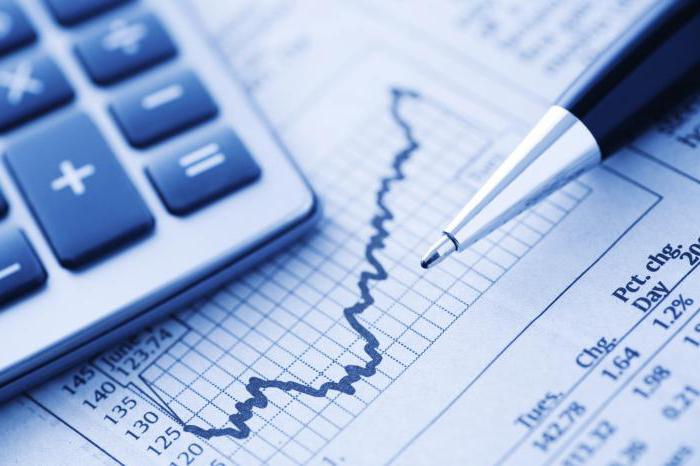The financial stability of the enterprise is one of the basic principles of its functioning. There are many definitions of this concept, as well as methods that are used to evaluate this concept. So, what exactly is this very stability, what are the ways of its regulation, the conditions of its existence and assessment methods?
Definition
What to start with is the concept of financial sustainability of an enterprise. Most often, it is associated with the solvency of a company. That is, if more than fifty percent of the company's capital is covered by the funds necessary for the normal functioning of the company’s market, the company is considered financially stable. Without solvency, the stable existence of a business in constantly changing market conditions is impossible. That is, we can safely say that such related concepts as solvency and financial stability of an enterprise reflect the tendency for revenue to prevail over expenses for this company. But these principles of entrepreneurship are determined not only by income and expenses, business results, but also by the continuity of the production process, the rational use of available resources, the success of product sales - that is, the stably positive functioning of the enterprise at all stages of its activity.
How is estimated
How is the assessment of the financial stability of the enterprise? Of course, as in any economic indicator, there are many criteria, but, according to experts, the most important are solvency, creditworthiness and profitability. After calculating the special ratios, the results of assessing financial stability are summarized.

But here everything is not so simple. If the financial stability indicators of the enterprise turn out to be insufficiently high, this may be a signal of the likely ruin of the company soon - an irrational allocation of resources almost always leads to unnecessary expenses of the company’s budget. On the other hand, if the business is excessively stable, this can lead to the impossibility of the full sale of products and their accumulation in warehouses. In both cases, enterprises are not able to adapt to the requirements of the market, which undoubtedly negatively affects their income and expenses, therefore the best option is the golden mean, that is, stable maintenance of average financial stability.
Solvency
What is solvency and how does the assessment of the financial stability of an enterprise depend on it? Solvency is the ability of an economic entity to pay its debts in a timely manner: to pay suppliers, employees, if there is a sales network, pay rent, cover depreciation expenses, etc. The following solvency indicators of an enterprise can be distinguished:
- The company has a certain stock of finances, which it can use at any moment of financial activity without damage to production.
- The company has no debts on loans and obligatory payments.
- The profit at the end of the period in which the solvency is assessed belongs to the company, and is not spent on mandatory payments.

At the same time, if a company is declared insolvent, it is first necessary to establish whether the problem is chronic (that is, financial problems arise constantly and most likely they will end in the bankruptcy of the company) or accidental (difficulties arose only during the assessment of the company's solvency and eliminated they will be quite easy).
Maintaining the solvency of the enterprise is one of the main conditions for its financial stability.
Creditworthiness
The next point is creditworthiness. It consists of two components. Firstly, a creditworthy enterprise can easily obtain the loans it needs. Secondly, having received these funds (by the way, according to statistics, most of the companies in Russia are opened specifically with credit funds, not with equity), the company fulfills all its loan obligations by regularly paying interest. The financial and economic stability of the enterprise can ensure creditworthiness: a stable profit guarantees regular payments and, therefore, a good credit history.
Profitability
Ensuring the financial stability of the enterprise occurs at the expense of its profitability. Profitability is an assessment of how the company is useful to society and, therefore, profitable to its owner. Maintaining profitability is impossible without careful planning of the financial activities of the company: even the most stable enterprise, having invested money in a product that will not only not pay off, but will not make a profit, will suffer serious losses that negatively affect its financial stability. That is why it is necessary to constantly analyze the market situation and direct financial flows to the most profitable industries.
Financial sustainability: indicators
Indicators of financial stability, as mentioned above, largely depend on special ratios, which assess the stability of a company in the market. The following coefficients are distinguished:
- Concentration - associated with the investment of personal funds of the owners of the enterprise. The more personal finances invested, the more stable the company: there is no need to pay credit and loan payments, which can significantly reduce the dependence of the company’s stability in the market on its profits - if there is no need to pay a fixed amount each month, which in the initial stages can exceed profit, then the probability bankruptcy is much less.
- Financial independence - associated with the percentage of non-personal funds in the capital of the company. Naturally, the higher it is, the more credit and loan obligations hang on the company and the more likely it is impossible to fulfill them. A large number of loans on the subject of the economy negatively affects its solvency - no one will give new loans with old ones outstanding. Therefore, a large share of borrowed funds in capital is a sure path to bankruptcy.
- Long-term financial independence - is associated with the value of the assets of the enterprise, that is, funds that allow the company not to depend on short-term loans.
Each of these ratios allows you to find vulnerabilities in the financial policy of the company. With their timely elimination, the company can avoid the enormous costs associated with the incorrect distribution of financial flows. The data obtained as a result of calculating the ratios are then used to determine the type of financial stability.
Types of Financial Sustainability
Based on the information obtained in the evaluation process, companies are assigned certain types of financial stability of the enterprise. They depend on the ratio of expenses and revenues of the company and its use of profits. So, financial stability happens:
- Absolute - working capital (what is spent on the formation and maintenance of the circulation of goods) significantly exceed costs.
- Normal - to cover costs, the company uses not only its own working capital, but also attracts additional sources of financing (credit loans, for example).
- Unstable situation - working capital of the enterprise is not enough to cover costs. Because of this, the company is forced to turn to additional sources of financing, taking on additional payment obligations.
- The critical situation is the next stage after an unstable one. Business still lacks its own funds, but the situation is exacerbated by debts to creditors.

The types of financial stability of an enterprise have a huge impact on their future financial policies. It is clear that if financial stability is absolute, then the company does not need to get loans just to increase its capital, because then, when risks arise, it is far from the fact that the company will be able to fulfill its obligations to creditors. In the same way, an enterprise in a critical situation should not take additional borrowed funds from doubtful creditors (because at this stage the proven financial institutions already refuse because of the insolvency of the company), but it is better to optimize costs.
Factors Affecting Financial Sustainability
Factors of financial stability of the enterprise are divided into two groups. The first is internal factors, that is, those that depend on the company itself. These include:
- Products and services (the industry that the company belongs to) and their ability to stay on the market.
- Asset management company.
- Property and financial management.
- Funds attracted by the company from outside to maintain solvency.
- Own reserves as guarantors of solvency.
With proper disposal of all the above factors, the company will be able to avoid internal problems.

But there is a second group of risks - external factors of financial stability. Among them stand out:
- The level of development and security of the production industry with the latest technical and technological achievements.
- Solvency of the population.
- The economic policy of the state where the financial activities of the enterprise.
The company cannot influence the second group of factors, therefore it is forced to adapt to it. Sometimes, despite the stability of internal factors, external problems prevent the business from developing normally. That is why, in the course of economic activity, enterprises are required to take into account all possible risks to ensure their comfortable existence in the market.
Financial stability
The conditions of financial stability of an enterprise are made up of a combination of sustainability factors that depend on the type and sustainability indicators of a particular company, but in principle, we can highlight some tips that are universal for all enterprises:
- Continuous monitoring of financial activities at all stages of production in order to avoid unnecessary costs.
- Flexible pricing, the ability to adapt prices to changing market conditions.
- Minimal dependence on external financial resources and loans to reduce mandatory costs.
- Constant modernization of production, which allows to improve product quality and capture an increasing market share due to the crowding out of uncompetitive enterprises.
- Monitoring income and expenses to identify the most vulnerable places in the conduct of financial activities.
It seems that these terms and conditions are primitive and obvious, but at the same time their observance is a guarantee of a long-term presence of the company in the market.

The financial stability of the enterprise depends on the skillful management of all possible risks and minimizing costs while maximizing profits, so it is important to develop your own business strategy and market behavior.
Increase financial stability
Is it possible to increase the financial stability of the enterprise? Of course yes. Based on the above criteria, the following methods can be distinguished:
- Optimization of the company and continuous accounting of goods.
- Flexible pricing policy that adapts to market conditions.
- Optimization of depreciation (accounting of depreciation objects and planning costs for it).
- The maximum reduction in taxes on the company's profit (withdrawal of funds through non-residents, payment of a portion of its own expenses using company funds, which replaces VAT (value added tax) with usually lower personal income tax (personal income tax), etc.).
- Reduction of social expenses in case of risks (expenses for retraining of personnel, company clothes, reduction of material assistance, etc.).
Naturally, these are far from all the methods that entrepreneurs use. The choice of this or that method depends on the current financial condition of the company; you should not believe in universal strategies.

The financial stability of the company, in many respects, is a matter of a comprehensive analysis of the situation around the business. Only having a complete understanding of what is happening both inside the company and outside it, you can choose the most suitable way to strengthen the company in the market in a particular situation.
Financial sustainability management
Managing the financial stability of an enterprise is not an easy task, requiring certain knowledge, intuition and, probably, luck. It is worth noting that the external factors of enterprise sustainability are the same for many companies, they vary only depending on the scope of the enterprise. Most risks are related to internal factors, that is, directly to the conduct of business. The main condition for the successful functioning of the company, as mentioned above, is the constant monitoring of any financial activity. Such a measure allows the early stages to identify possible difficulties and eliminate them before these problems entail costs. Moreover, it immediately reveals expenses that could have been avoided (for example, remuneration of employees whose functions are easily performed by equipment), even if they seem minimal, but given their (most often) constancy, in the long run they will result at serious cost.

Monitoring the market will allow you to correctly determine the price of the product, ensuring its competitiveness, will make it possible to optimally choose the methods of selling products - all this will save a lot of money on fixing errors. The financial stability of an enterprise is a matter of quality analysis and planning, so do not neglect them, otherwise successful business is impossible.